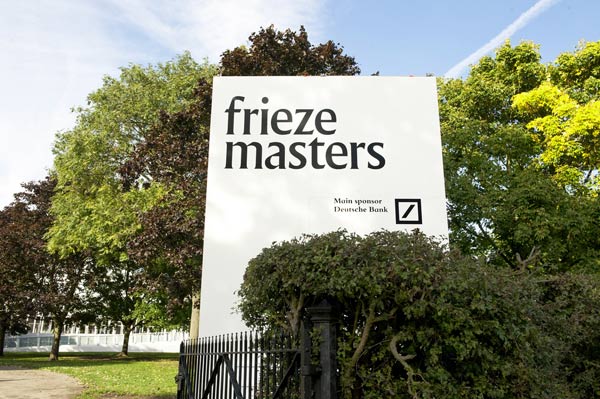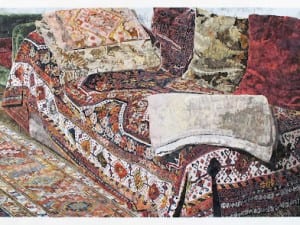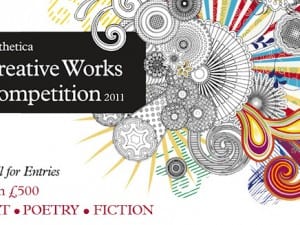The differences between Frieze London and Frieze Masters are undoubtedly the atmosphere in which they are housed and the context and authorship of the work presented. The luxurious serenity that one is greeted with at Frieze Masters means that there are fewer and more intimate crowds catching up and working in a secluded manner. Prevailing all around is a great sense of maturity as a calm wave of reflection and consideration infects the people and the space. The galleries here are not so much interested in selling and examining their standing within the art world but merely to allow a serene appreciation of the work they have to offer. Unlike Frieze London, Frieze Masters is a showcase for art from history. Surprisingly a great deal of the work is Pop Art which unstably cushions itself within the established spiritual silence constructed specifically for the benefit of the viewers as they perpetually gaze into the uncontested works of genius. This allures to the question: can Pop Artists be considered “masters”? The titling of the fair appears to heavily reference Old Masters, who were European and worked before the 19th century. This will inevitably split audiences, but intriguingly one cannot deny Pop Art’s importance and transgressing nature within the history of modern art.
A lesser known figure head of the Pop Art movement in New York in the 60’s, Rosenquist’s The Facet (1978) is one of the first dissections of commercial society, in its fauvist glory, to be seen upon entering. Incredibly, it does not seem out of place. It depicts stacks of chinaware in the top panel split by a man’s hand being held by a woman’s affectionately. Away from the obvious connotations of a date or romantic occasion, could it now take on the context of the deals taking place between the galleries and dealers who flirt with prospective collectors providing magnums of champagne and intimate body language? One must certainly feel that there is an element of romance in the buying and selling of art that entails a thrilling game of cat and mouse so tense it parallels a mating ritual.
However, at times there is conflict between the aesthetics and situational positioning of the more contemporary works. Noticeable in creating a degree of tension and resentment some of the works portray a surreal sense of isolation. Dan Flavin’s Four Horizontals (To Sonjon) (1963) sits in the middle of light grey wall. The red neon glow seems to dispel everything Frieze Masters would appear to incorporate. The connotations are fantastic as the seedy red light glow, with trashy American road movies, dive bars and advertising in the sex industry, without any literal provocation. The formal relationship between the lights could be deemed as a social abstraction from popular culture or merely an aesthetic choice from Flavin. It resides beautifully within the architecture of the space and that surrounding it. When circumnavigating the space pondering the other works, the geometric shells and frameworks of the gallery space fragment the rows of light harshly. It is with this sudden and constant change in the corner of one’s eye that this piece becomes intensely captivating, creating a wonderful dance between architecture and art.
Despite the large array of Pop Art there is an impeccable selection of paintings, one such painting, Pieter Fransz de Grebber’s Bust of A lady In a Blue Gown, (1652/3) shows brushwork affluently laced with splendour and vigour. It shows a woman’s side profile from the right as she gazes down and across the viewer’s own path of sight, lost, and dead. The greyish white blending surrounds her head and showers her face with a ghostly absence, illustrating to a source of light in front her. As the light falls upon her blue gown the brush strokes become visible and calculatingly expressionistic similar, to Wilhelm Sasnal’s paintings now. For a painting conceived nearly four hundred years ago, Bust of A lady In a Blue Gown seems extremely sophisticated and constructed. However, this might be that after four hundred years of progression and evolution in art and humanity, with lifetimes dedicated to the exploration of aesthetical interpretation has allowed greater analytical qualities to be seen. If so, does that mean in four hundred years, Rosenquist’s The Facet or Flavin’s Four Horizontals (To Sonjon) will be considered and met with a higher calibre of consideration, able to be interpreted in ways unknown to us now? But Frieze Masters is so much more than a playground for intellectual analysis. Frieze Masters is an incredibly powerful symphony of exciting passionate romance, flickers of wild colour and wealth blanketed in graceful maturity.
Will Davie
Credits
1. Frieze Masters 2012, Photograph by Linda Nylind, courtesy of Linda Nylind/ Frieze.




